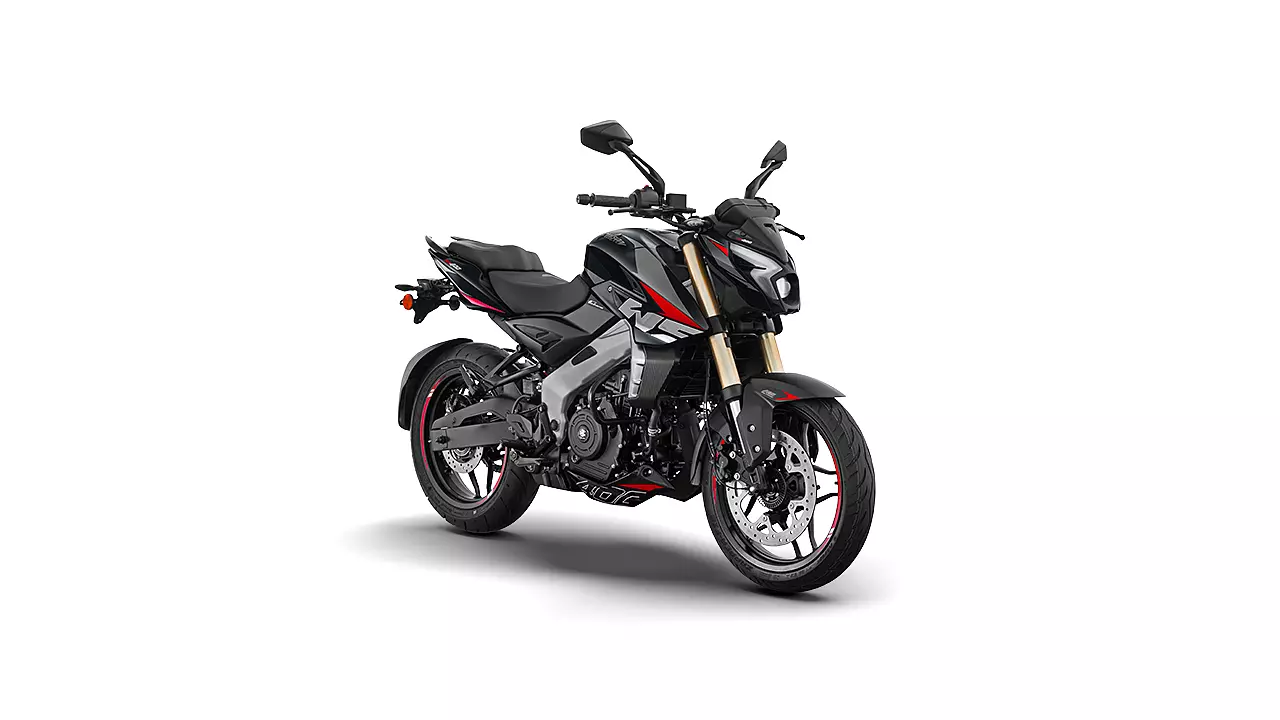The unveiling of the Bajaj Pulsar NS400 has ignited quite the stirring among enthusiasts with its offering at a price point that demands attention – Rs. 1.85 lakh, to be exact. But is this just another tale of David versus Goliath? Perhaps, but not in the traditional sense.
At Rs. 46,000 less than its power cruiser sibling, the Dominar 400 which is priced at Rs. 2.25 lakh, the Pulsar NS400 emerges as the most affordable option in the 400cc segment, dethroning the Hero Mavrck x440, which previously held the position at Rs. 1.99 lakh.
Fresh off the press, the Pulsar NS400 boasts the same liquid-cooled single-cylinder 373cc engine, churning out a peak power of nearly 39.4bhp and a torque of 3.5 kgm. It flaunts the familiar dual-channel ABS brake setup and even shares a similar tyre configuration! With both bikes even sharing similar top speeds, Bajaj claims the NS400 can hit 154kph, rivalling its cruiser counterpart, the Dominar 400. While the Dominar’s official top speed falls slightly lower, anecdotal evidence suggests otherwise, with green machines clocking similar numbers over the years. But are they truly cut from the same cloth?
The Dominar 400 is a power cruiser; we once dubbed it the ‘Perfect upgrade.’ The 187kg weight doesn’t hinder the rider one bit as it comfortably cruises at speeds at or over 120 kph. The bike also comes with a slew of modifications that make touring that much easier. During our review, we noted the bike’s comfort even at 130kph in 6th gear with no signs of strain.
Due to its street-fighter nature, the Pulsar NS400 is lighter by 10kg coming in at 174kg, which would be required in our crowded cities where the Dominar 400 has faced issues. if history has anything to say with the Pulsar, the weight would be more centralized to make it easier to ride in the city. While this has been a contention for many, we will only have a clear answer when we ride this machine, later this year.
So, where lies the real disparity? Technology! The NS400 is loaded with features. Ride-by-wire technology, Bluetooth connectivity, riding modes, turn-by-turn navigation, music streaming, and more.
But it’s not just about the bells and whistles. The design and ergonomics also play a pivotal role. While the NS400 stays true to its roots, save for that aggressive LED headlamp, the bike largely mirrors the NS200, embodying the street-fighter – light and ready to tackle traffic. In contrast, the Dominar 400, with its raised handlebars, upright seating position, and touring prowess, reigns on the highways as the cruiser flagship of Bajaj.
A funny thing that many enthusiasts remember, is that the first Dominar 400 featured the Bajaj logo which oddly looked like the Bluetooth symbol on its secondary console, despite never featuring Bluetooth. Bajaj has rewritten that, by making the NS400’s Bluetooth functional. More details on the NS400 are available here!
What does this mean for the Dominar 400? It’s reasonable to assume that the Dominar could receive something similar down the line. While Bajaj has made no official statements, it has been a trend, and we hope that the power-cruising elder brother receives some affection.
Hence, the title, if it ain’t broke, don’t fix it! Bajaj has combined the best elements from the elder brother, the Dominar 400, and the younger cousin, the NS200, to create the NS400.
This isn’t a complete narrative though; wait until we review this machine, and for that, stay tuned with Motoring World.


















